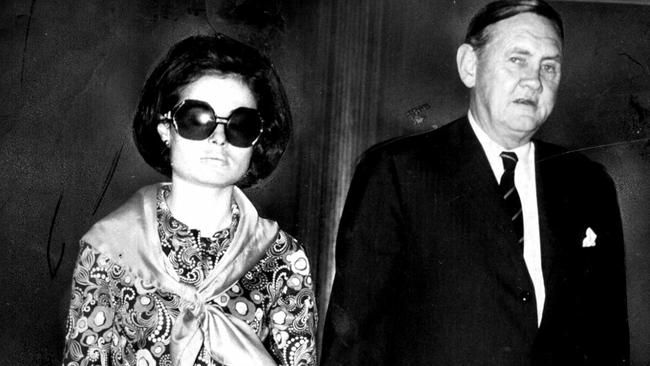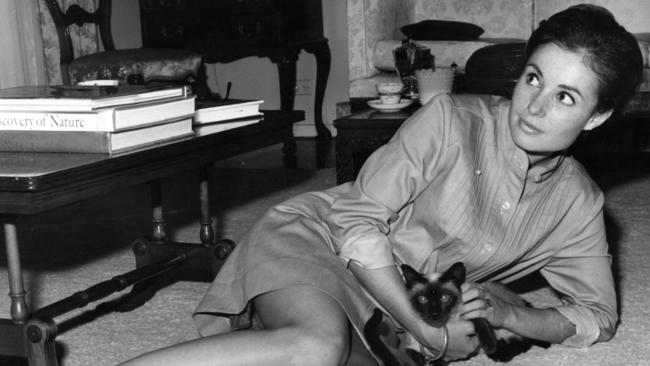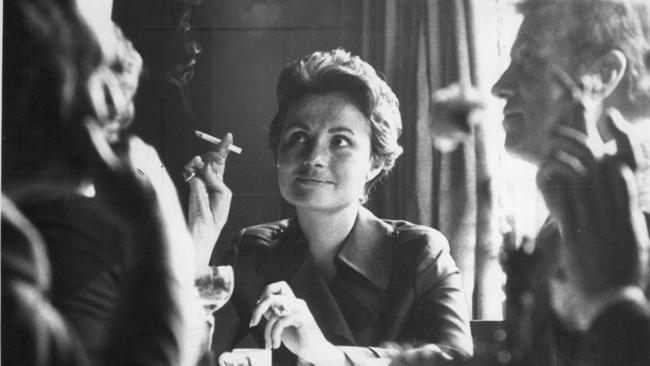Affairs, power struggles, hatreds: working for John Gorton
Ainsley Gotto’s appointment as PM’s chief of staff caused a sensation. The question that has titillated political observers for decades has been answered.

Gorton’s selection of Gotto to run his prime ministerial office was a sensation. She was not a senior public servant or a Rhodes scholar like her predecessor, and did not come from the political establishment. She had an intermediate school certificate and had completed a typing and shorthand course. She was also a woman, and no woman had ever been so close to the centre of power.
It is not surprising — though utterly lamentable — that many in the public service, the parliament, the press gallery and the public assumed Gorton must have been having an affair with the intelligent, beautiful and stylish Gotto.
Hancock answers the question that has titillated close observers of politics for more than 50 years: no. Gorton was in fact having an extended affair with the widow of a “a very senior naval officer” — whom he does not name but it is known to this writer — and it is likely there were others. Hancock also describes several of Gotto’s relationships at the time with other older men, including Liberal MP Bill Bridges-Maxwell, Pierre Trudeau’s adviser Ivan Head and an unnamed future president of Fiji.

Later, Gotto had a relationship with Race Mathews, who was then opposition leader Gough Whitlam’s principal private secretary. “Whitlam and Gorton tolerated the relationship, something their modern-day successors would never do,” Hancock writes. Hancock first outed the Gotto-Mathews relationship in his excellent biography John Gorton: He Did it His Way (2002).
It was while working in the whip’s office for Dudley Erwin that Gorton, then Senate leader, observed Gotto’s shrewd political mind. Hancock describes her role in handling three key events that were instrumental in appointing her principal private secretary: diffusing the damaging “VIP affair”, the death of Harold Holt and helping to elevate Gorton to the prime ministership.
Gotto, known as “mini-whip”, admired Gorton. “She was captivated by his fervent Australian nationalism and his vision of a country being proud of itself and united in purpose,” Hancock writes. “Here was a politician near the top who asked many of the same questions which had bothered her, and who wanted to find answers and to implement change.”
Hancock describes the growing concern within the government about Holt’s lacklustre performance as prime minister. At the same time, it was known that Gorton had “leadership ambitions” and was eyeing a shift to the House of Representatives. The biography documents the series of tactical decisions Gotto made that helped pave the way for Gorton to become prime minister when Holt disappeared.
In choosing somebody to run his office, Gorton looked for “compatibility over experience”. He did not want a public servant who owed a loyalty to “the system” rather than to him personally. It is why Gorton also made Lenox Hewitt head of the Prime Minister’s Department and demoted John Bunting to head the Department of the Cabinet Office.
Running Gorton’s office had its challenges, to say the least. Gotto had to deal with a sometimes “lazy” prime minister who found paperwork boring and had to “manage” him when he had been drinking too much. They had some “blazing rows”, as Gorton did not always want to hear Gotto’s opinions, and she resigned at least twice in her first year as principal private secretary but “made up” the next day.

Ministers accused Gotto of blocking access to Gorton, overly influencing him on policy and ministerial appointments, and resented her referring to them by their first names. Gorton was advised to “get rid of her” by governor-general Richard Casey, who had absorbed complaints from the business community. But nobody else could have managed Gorton better; she kept him as focused and disciplined as possible, ensured the business of government ticked over, and there was nobody he trusted more.
When Erwin was dumped from the ministry after the 1969 election, he let slip to journalist Laurie Oakes that the reason was: “It wiggles, it’s shapely, it’s cold-blooded and its name is Ainsley Gotto.” She felt demeaned and embarrassed. The phrase stuck with her for the rest of her life. (Gorton later thought Erwin was not clever enough to come up with a remark like that on the phone and gave the credit to Erwin’s wife, Joan.)
Gotto had no time for Gorton’s two successors as Liberal prime ministers, Billy McMahon and Malcolm Fraser. She found McMahon to be a “strange” and “repellent” man who would put his arm around her and insist on a kiss when visiting the whip’s office. She saw Fraser as “aloof”, “imperious” and “unlikeable”, and recalled him trying to “make a pass” at her one night when he was “very drunk”.
Gotto’s personal life was turbulent and she never had the same status, influence or fulfilment as she did in 1968-71. In her “afterlife”, she worked for Liberal minister Helen Coonan (2008-11) but other job applications and offers to sit on boards were frequently unsuccessful. She thought running Gorton’s office was “an unbeatable reference” but failed to build her CV with “solid and unbeatable qualifications” in subsequent decades. Moreover, many people found her “brusque manner” intolerable and refused to work with her.
Inevitably, Gotto is compared to Peta Credlin, chief of staff to Tony Abbott. Credlin is referenced at least a dozen times in the book. While Gotto transformed the role of prime ministerial chief of staff, and was the first woman to hold that role, Credlin exerted far more influence across government and with her prime minister.
Hancock was granted exclusive access to Gotto’s extensive papers, including diaries and notes not disclosed before, and interviewed her at length before her death, at age 72, last year. The result is a carefully researched, well-written and fascinating account of Gotto’s life, inexorably linked, for better or worse, to Gorton’s three-year prime ministership.
Ian Hancock’s Ainsley Gotto is published by Connor Court.




Ian Hancock’s new biography of Ainsley Gotto — who was appointed John Gorton’s principal private secretary (chief of staff) at age 22 in 1968 — sizzles with stories of extramarital affairs, sexism and harassment alongside political power struggles, festering hatreds and personal betrayals.